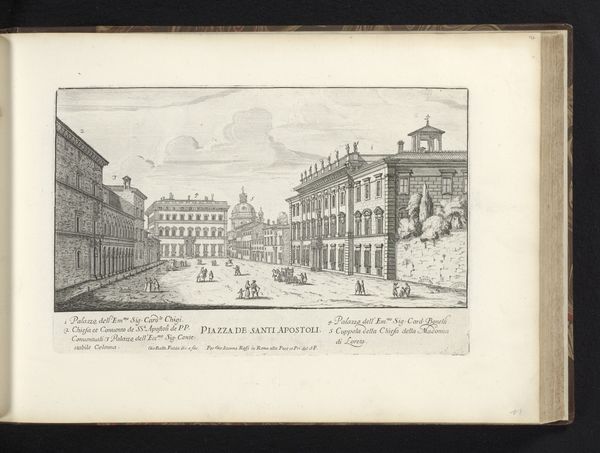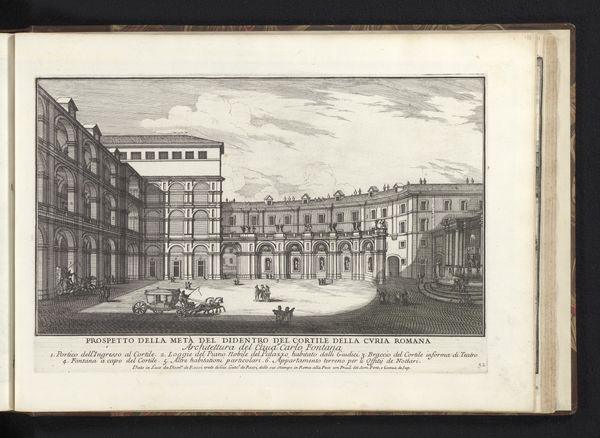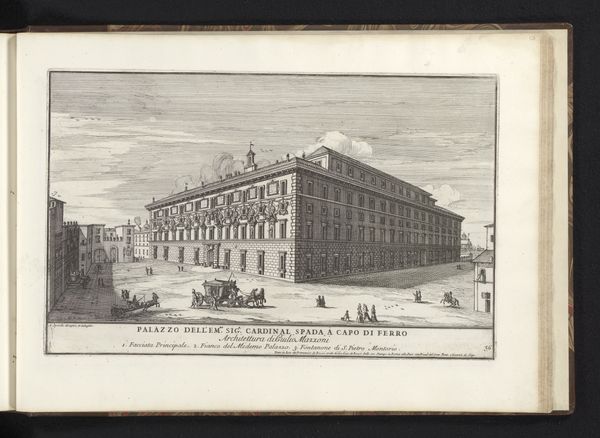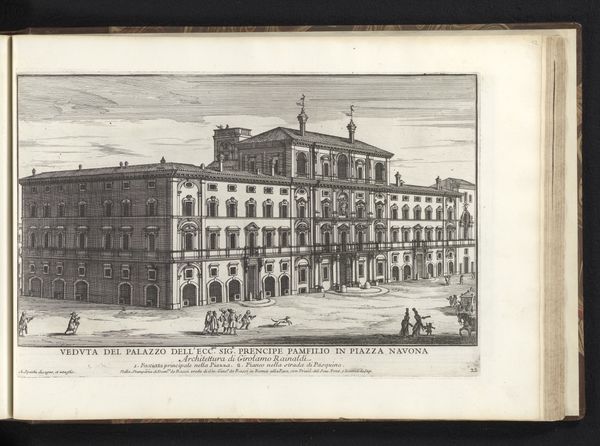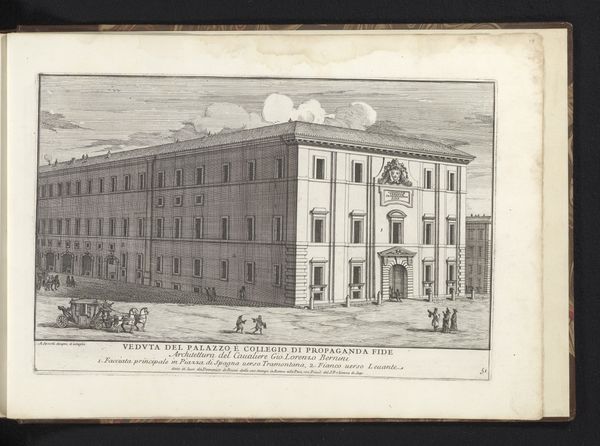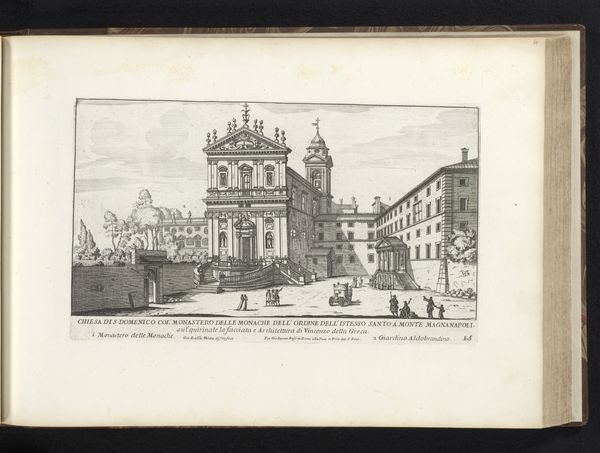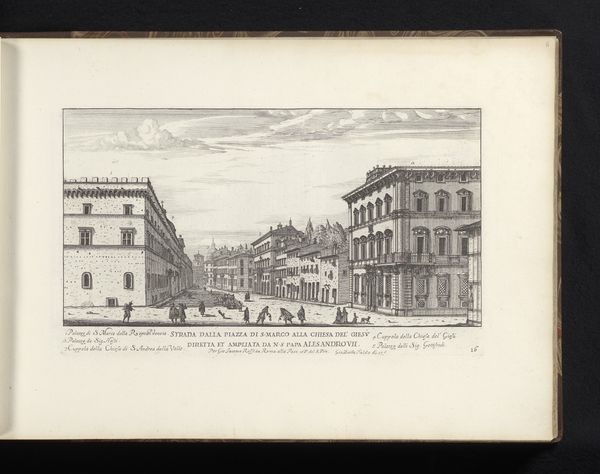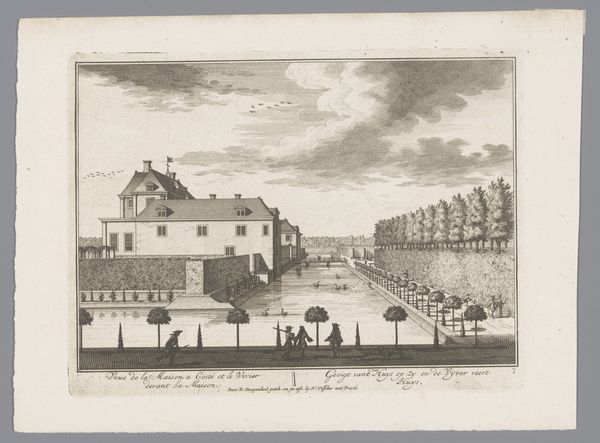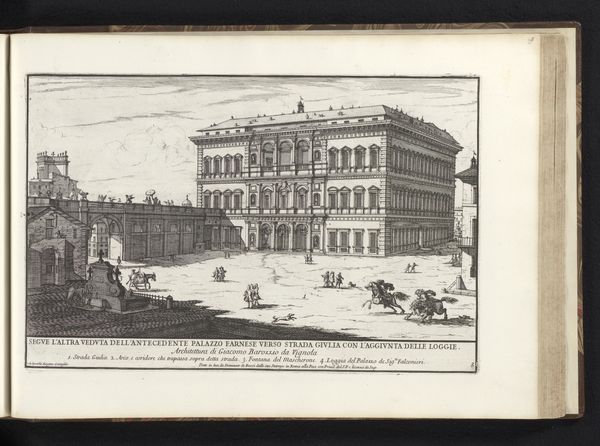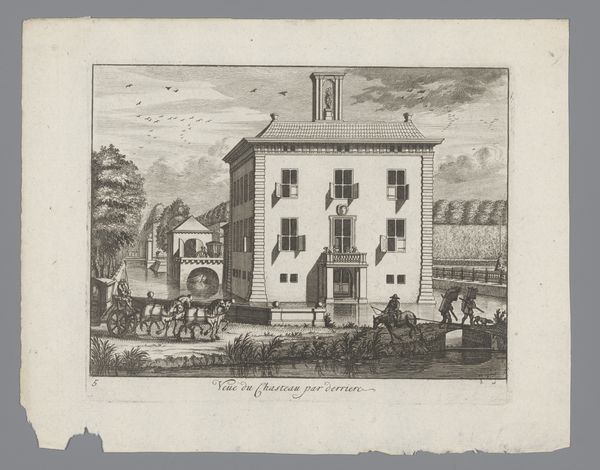
Piazza della Minerva en de kerk de Santa Maria sopra Minerva te Rome 1665 - 1667
0:00
0:00
print, engraving, architecture
#
baroque
# print
#
cityscape
#
italian-renaissance
#
engraving
#
architecture
Dimensions: height 189 mm, width 292 mm
Copyright: Rijks Museum: Open Domain
Editor: This engraving by Giovanni Battista Falda, dating back to 1665-1667, captures the Piazza della Minerva in Rome. The stark lines and precise detail create a really interesting, almost documentary feel. What stands out to you about this cityscape? Curator: As a materialist, I'm immediately drawn to the processes behind creating an engraving like this in the 17th century. Think of the labor involved – the artist meticulously carving into a metal plate, a process entirely reliant on skilled handiwork. Doesn't considering the economics of printmaking in that era—the costs of materials like copper, the accessibility of the final image to the public—shift our perspective? Editor: It definitely makes me consider the purpose of creating multiple copies, making this image more accessible, like printed news from the period, for instance. So, how might the economics shape what’s depicted? Curator: Absolutely. We must remember, images of this kind weren’t neutral records. Falda’s depiction emphasizes the church and the obelisk, signs of papal power and authority. The engraving process, in itself, a form of early mass production, disseminated these emblems far and wide. Who benefits from this wider view? Editor: So you are saying the Church literally distributed its brand in order to gain support... Curator: Precisely. It cleverly converted public space into symbolic real estate, disseminated through this easily-replicated, relatively low-cost medium. What looks like a simple city view is a potent statement about power and production in Baroque Rome. Editor: Thinking about the print as an object with a context, beyond just a picture of a place, adds another layer of appreciation for the art of this historical period. Curator: Agreed. Understanding the means and motivations behind production gives us a more complete view of the artwork itself, and the social conditions from which it emerged.
Comments
No comments
Be the first to comment and join the conversation on the ultimate creative platform.
